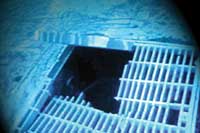
The Ultimate Pool Safety Checklist for Property Managers
Hey there, Property Managers! If you've recently had a Health Dept inspection about your main drains, this post is your next must-read. We're diving deep into pool safety, specifically focusing on anti-entrapment. Inspired by the Virginia Graeme Baker Pool & Spa Safety Act (P&SS Act), we're on a mission to make your pool the safest spot in town.
🔗 Want to level up your pool care game? Don't miss our post on The 3 C's Of Pool Care Every Property Manager Should Know.
The Heart Behind the Checklist: Virginia Graeme Baker's Story
Virginia Graeme Baker was a 7-year-old who tragically drowned due to DIRECT SUCTION on a faulty hot tub drain cover. Her story led to the P&SS Act, signed into law in December 2007.
In Graeme's memory, let's make sure we're doing everything we can to prevent another tragedy.

1. Do I Have an Anti-Entrapment Suction Outlet (Main Drain Cover)?
Yes
No
🔗 For Florida pools, make sure it meets ASME/ANSI A112.19.8-2007 standards.
2. Do I Have the Current Form for Verification and Replacement?
Yes
No
🔗 Check out the DOH Permit Form.
3. Is My Pool on Direct Suction or Gravity?
Direct Suction (MOVE TO SECTION 4)
Gravity
What's This?
Direct Suction: The pool water gets sucked directly from the main drain to the pump
Gravity: The water goes by gravity slope into a special tank first and the pump suction pulls from the tank.
PLEASE NOTE IF YOU ANSWERED YES TO 1 AND 2 AND YOUR POOL IS ON A GRAVITY SYSTEM YOU DO NOT NEED TO MOVE TO SECTION 4.
CONSULT A LICENSED CONTRACTOR FOR VERIFCATION
4. If It's on Direct Suction, Do I Have an Approved Anti-Entrapment Device?
SVRS (Safety Vacuum Release System)
Vac-Alert
None
🔗 For SVRS testing guidelines, check out this SVRS Testing Guide.
IF THE ANSWER IS NONE THEN CONTACT A LICENSED POOL CONTRACTOR TO INSTALL AN APPROVED DEVICE
Anti-Entrapment Device Testing Frequency
For a deep dive into SVRS testing guidelines, check out this SVRS Testing Guide.
Conclusion
If you've checked all these boxes, give yourself a pat on the back—your pool is looking super safe. If not, it's time to roll up those sleeves and get to work.


